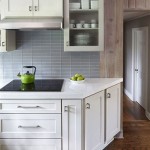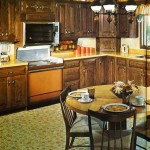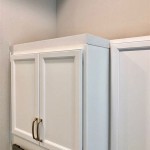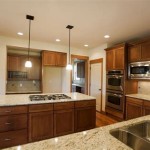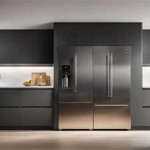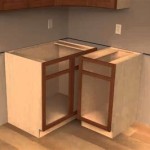Updating White Laminate Kitchen Cabinets: A Comprehensive Guide
White laminate kitchen cabinets are a staple in many homes due to their affordability, clean aesthetic, and versatility. However, over time, they can appear dated, worn, or simply no longer align with evolving design preferences. Instead of opting for a costly full kitchen renovation, homeowners can revitalize their white laminate cabinets through various updating techniques. This article provides a detailed guide to updating white laminate kitchen cabinets, exploring different methods, considerations, and best practices.
Prior to commencing any updating project, a thorough assessment of the existing cabinets is crucial. This involves examining the laminate surface for scratches, chips, peeling, or water damage. The condition of hinges, drawer slides, and hardware should also be evaluated. Addressing any underlying structural issues or significant damage is paramount before proceeding with cosmetic updates. Ignoring these issues can compromise the longevity and appearance of the finished project. Minor imperfections, such as small scratches or dings, can often be repaired with laminate repair kits available at most home improvement stores.
Cleaning the cabinets thoroughly is an essential preliminary step. Years of accumulated grease, grime, and dust can hinder the adhesion of paint, primer, or other finishes. A degreasing cleaner specifically formulated for kitchen surfaces should be used, followed by a rinse with clean water and thorough drying. Ensure all cleaning residue is removed to prevent interference with subsequent steps. For stubborn stains, a paste of baking soda and water can be gently applied and scrubbed.
Preparing White Laminate Cabinets for Painting
Painting laminate cabinets requires meticulous preparation to ensure proper adhesion and a durable finish. Laminate surfaces are inherently smooth and non-porous, which necessitates priming to create a surface that paint can effectively grip. Skipping this step will inevitably lead to peeling, chipping, and an unsatisfactory outcome.
The first step is sanding the laminate surface lightly. This process, referred to as scuff sanding, creates microscopic scratches that provide a better key for the primer to adhere to. Use a fine-grit sandpaper, such as 220-grit, and gently sand the surfaces in a circular motion. Avoid applying excessive pressure, as this can damage the laminate. After sanding, thoroughly remove all dust particles with a tack cloth or a vacuum cleaner with a brush attachment. Dust and debris can compromise the smoothness of the paint finish.
Applying a high-quality bonding primer is the next critical step. Bonding primers are specifically designed to adhere to slick surfaces like laminate and provide a foundation for paint. Choose a primer that is specifically labeled for use on laminate or melamine surfaces. Apply the primer in thin, even coats using a brush, roller, or sprayer, following the manufacturer's instructions. Allow the primer to dry completely according to the recommended drying time before proceeding to the next step. Multiple thin coats of primer are generally preferable to a single thick coat, as they minimize the risk of drips and ensure a more uniform coverage.
Once the primer is dry, inspect the surface for any imperfections, such as drips or unevenness. Lightly sand these areas with fine-grit sandpaper to create a smooth surface for painting. Remove any dust particles before applying the paint.
Painting White Laminate Cabinets: Selecting the Right Paint
Selecting the appropriate type of paint is just as crucial as proper preparation. Not all paints are suitable for laminate surfaces, and using the wrong paint can result in poor adhesion, cracking, or peeling. Acrylic latex paints with a satin or semi-gloss finish are generally recommended for kitchen cabinets due to their durability, washability, and resistance to moisture. Oil-based paints can also be used, but they require longer drying times and can yellow over time. Latex paints are also generally lower in volatile organic compounds (VOCs) than oil-based paints, making them a more environmentally friendly choice.
Consider the sheen of the paint. A semi-gloss finish offers greater durability and is easier to clean than a satin finish, making it a practical choice for kitchen cabinets that are subject to frequent use and potential spills. However, a semi-gloss finish can also highlight imperfections in the surface, so meticulous preparation is essential. Conversely, a satin finish provides a softer, more subtle look and may be more forgiving of minor imperfections, but it may not be as durable or easy to clean as a semi-gloss finish.
Apply two or more thin, even coats of paint, allowing each coat to dry completely before applying the next. Avoid applying thick coats of paint, as this can lead to drips, runs, and a less durable finish. Use a high-quality brush, roller, or sprayer to apply the paint, depending on your preference and the size of the project. A brush is ideal for painting intricate details and hard-to-reach areas, while a roller is suitable for painting large, flat surfaces. A sprayer provides the most uniform finish, but it requires more skill and preparation. Lightly sand between coats with fine-grit sandpaper to remove any imperfections and create a smooth surface for the next coat of paint.
After the final coat of paint has dried completely, consider applying a clear topcoat for added protection and durability. A clear polyurethane or acrylic topcoat can protect the paint from scratches, stains, and wear, extending the life of the painted cabinets. Apply the topcoat in thin, even coats, following the manufacturer's instructions.
Beyond Paint: Alternative Methods for Updating Laminate Cabinets
While painting is a common method for updating white laminate cabinets, several alternative techniques can achieve a fresh, new look without the need for paint. These alternatives include using self-adhesive films, replacing cabinet doors and drawer fronts, and adding decorative hardware.
Self-adhesive films, also known as contact paper or vinyl wraps, offer a versatile and affordable way to update laminate cabinets. These films are available in a wide range of colors, patterns, and textures, allowing homeowners to create a custom look without the expense of replacing the cabinets entirely. Applying self-adhesive film requires careful measurement, cutting, and application to avoid bubbles and wrinkles. Clean the cabinet surfaces thoroughly before applying the film, and use a squeegee to smooth out any bubbles or wrinkles. While self-adhesive films can be a cost-effective solution, their durability may be limited compared to paint or other finishes.
Replacing cabinet doors and drawer fronts is another effective way to update the look of white laminate cabinets. This option allows homeowners to maintain the existing cabinet boxes while replacing the more visible components with new doors and drawer fronts in a different style, color, or material. Numerous companies specialize in manufacturing replacement cabinet doors and drawer fronts, offering a wide range of options to suit different tastes and budgets. When ordering replacement doors and drawer fronts, ensure that they are the correct size and configuration to fit the existing cabinet boxes. Professional installation may be required for some replacement doors and drawer fronts.
Simply updating the hardware on white laminate cabinets can significantly enhance their appearance. Replacing old, outdated knobs and pulls with new, stylish hardware can instantly elevate the look of the kitchen. Consider the overall style of the kitchen and choose hardware that complements the existing decor. Options include brushed nickel, chrome, oil-rubbed bronze, and matte black finishes. Ensure that the new hardware fits the existing holes in the cabinet doors and drawer fronts, or be prepared to drill new holes. This is a relatively inexpensive and straightforward way to breathe new life into white laminate kitchen cabinets.
In addition to these fundamental updates, adding subtle decorative elements can further personalize and enhance the look of white laminate cabinets. Applying decorative molding or trim to the cabinet doors or adding under-cabinet lighting can create a more sophisticated and custom appearance. Consider adding glass inserts to some of the cabinet doors to showcase decorative items or create a more open and airy feel. These small details can make a significant difference in the overall look and feel of the kitchen.

How To Add Trim And Paint Your Laminate Cabinets

How To Add Trim And Paint Your Laminate Cabinets

How To Paint Laminate Kitchen Cabinets White

How To Add Trim And Paint Your Laminate Cabinets

A Year In Review Of How I Painted My Laminate Cabinets With Two Methods

How To Paint Laminate Kitchen Cabinets Perfect Finish Tips

How To Paint Laminate Cabinets The Handyman S Daughter

Painting Kitchen Cabinets Without Primer

How To Update Dated Laminate Cabinets The Handyman S Daughter

Updating 80 S Laminate Cabinets To Rethink Home Interiors Staging Montgomery County Pa
Related Posts


